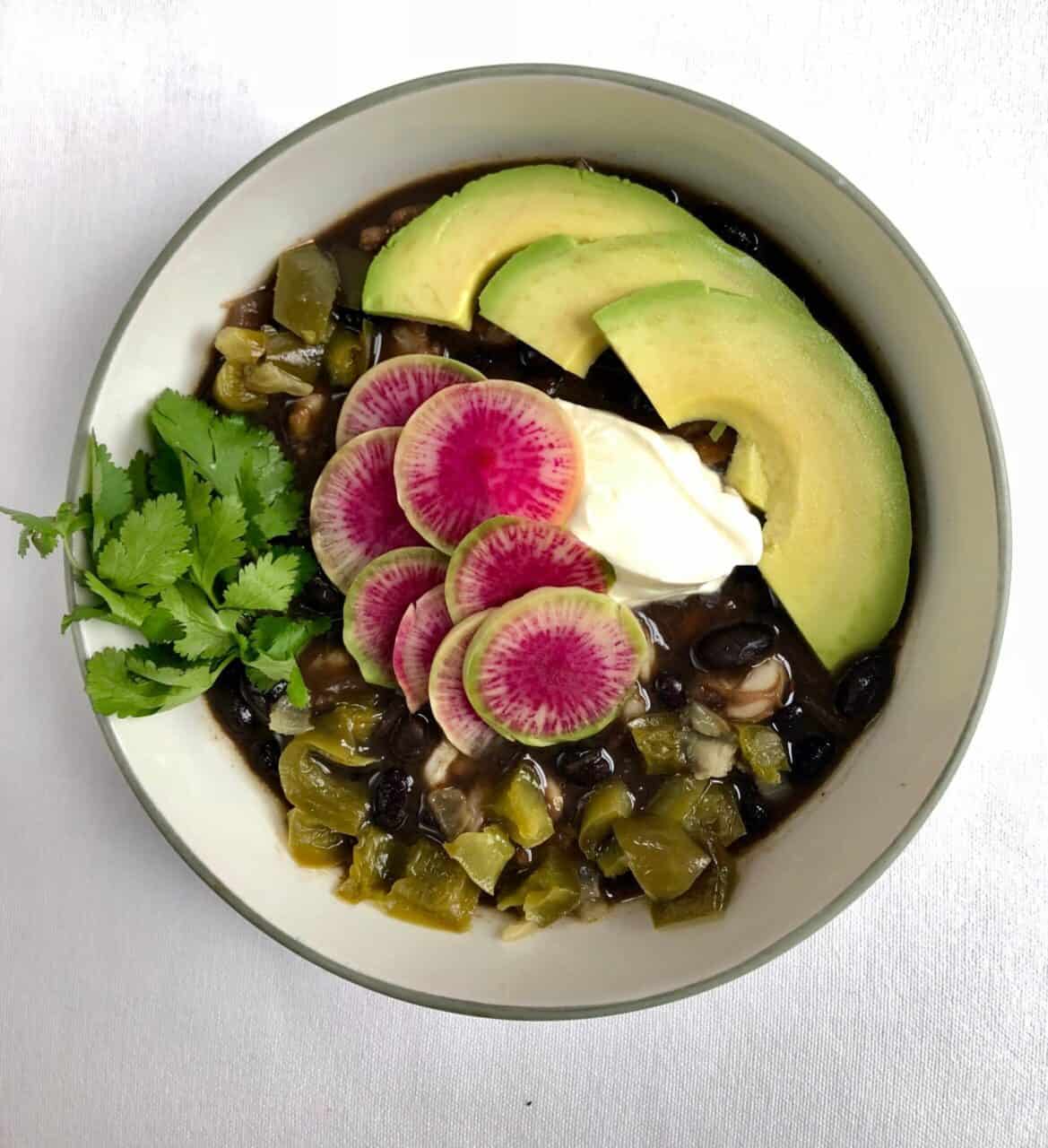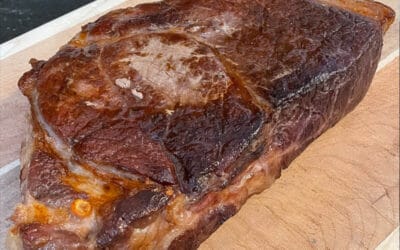Have you made hominy yet? If so, make some posole!
Posole (also spelled pozole, both pronounced “po-so-lay”) is from the Nahuatl languages’ pozolli meaning hominy. It’s a stew made with hominy, and while often made with pork, has many variations.
The base is either white (essentially plain), green (tomatillos and/or green peppers), or red (red peppers and/or tomatoes). Chicken, shrimp, or beans are common protein alternatives. Other common ingredients include herbs such as oregano and spices that we associate with chili such as cumin and various dried, ground peppers. Toppings include what we think of as Mexican cuisine such as avocados, lime, salsa, and chili peppers. However, other typical toppings are local to Chattanooga and currently in season: radishes, shredded cabbage, cilantro, onion, and garlic.
No matter the other variations, all posole contains hominy. You can buy hominy in cans, dried, or frozen, or, best of all, make it from local dried corn (see last week’s post). Canned is pretty much an instant food; fresh or frozen will cook in the time it takes your stew to cook; but dried needs more time to cook unless you soak it overnight.
On a recent trip to see family and friends, our hostess served us a vegetarian posole. I think it would have been a good plain vegetable soup, but the hominy took it to another level of tastiness. About the same time I saw Real Simple’s recipe for Slow Cooker Black Bean Posole. Perfect timing! We enjoy cooking special dishes during the holidays, but it’s nice to have some easier dishes, too, to balance out the extra time spent in the kitchen. Also, posole is traditionally a special occasion dish, including one served New Year’s Eve.
You can follow Real Simple’s directions for the posole, but I took a few extra (fairly brief) steps and made it more enjoyable. First, I soaked my beans overnight. Next, I cooked them by themselves for most of the cooking time. Slow cookers are super convenient, and it’s yummy when flavors have a chance to meld. However, the long cooking time can muddy the flavors too much. Adding the savory ingredients nearer to the end of cooking allows the flavors to blend, but not disappear. The one thing I wish I had added at the beginning was my nomato paste (a thick version of nomato sauce). The acid in the nomato (or, per the recipe, tomato) paste probably would have helped the beans cook a little faster. My beans were old and took a while to cook. I planned for this, though I will plan more time next time I make this.
I sautéed the onion as well. I did this a day or two before, simply chopping and sautéing an extra onion during supper prep so it wasn’t a lot of extra work. I used our homemade garlic olive oil for both the garlic and olive oil so, again, I didn’t have to do a lot of extra work.
Although peppers are not in season right now, I have both blanched bell peppers in the freezer and hot pepper plants growing in my living room. Poblanos are also a pepper I’ve prepped and frozen in past summers. I chose to sauté the peppers separately and serve them as a topping. It’s a great way to provide spiciness for those who love it and keep it mild for those who do not. Another option while fresh peppers are out of season is to use dried peppers. I’ve not used them in stew, but Serious Eats has a primer all about dried chilis.
Since it was my first time using fresh hominy, I cooked that separately. This time I plan to add it to the beans in time to cook: about 4 hours. If your black beans are fairly fresh (for dried beans) you can throw them in together at the beginning. Again, mine are not so I’ll cook the beans for a while first.
Since it’s winter I was excited to see that radishes are a traditional topping for posole. I was even more excited when I saw watermelon radishes at market. So pretty! Also, the radishes’ spiciness and crunch perfectly complements the soft texture and mellow, almost sweet flavor of the beans and hominy.
This recipe makes a lot, and it’s a good thing: it was hard to catch a photo before my family ate it all! And then there were requests for more. I’ll be making this again soon when we have guests; I want to spend time with them, and not in the kitchen!
Throw together some posole and have a happy and restful holiday!
Slow Cooker Black Bean Posole
From Real Simple magazine (see my options below the recipe)
Ingredients:
8 cups low-sodium vegetable broth 3 poblano chiles, chopped
1 yellow onion, chopped
8 cloves garlic, chopped
¼ cup olive oil
2 tablespoon chili powder
1 tablespoon tomato paste
1 teaspoon dried oregano
1 lb. dried black beans
1 28-oz. can golden or white hominy, drained
¼ cup fresh lime juice (from 2 limes)
1 ½ teaspoons kosher salt
⅛ teaspoon cayenne
Fresh cilantro, sour cream, sliced avocado, and radishes, for serving
How to Make It:
Step 1: Combine broth, poblanos, onion, garlic, oil, chili powder, tomato paste, oregano, and black beans in a 6- quart slow cooker on high. Cook until beans are tender, 5 hours. Stir in hominy, lime juice, salt, and cayenne.
Step 2: Serve topped with cilantro, sour cream, avocado, and radishes.
Printable recipe here
Options:
- Soak the beans overnight, and, if using dried hominy, the hominy. Use about 1 ¾ – 2 cups dried hominy.
- Use 3 ½ – ¾ cups homemade fresh or frozen hominy. Add to cooker with the beans.
- Use a thicken nomato sauce or ¼ cup nomato sauce and a little less broth in place of the tomato paste.
- Sauté the onions, garlic, and/or peppers in the olive oil. Add these the last hour or two of cooking.
- Serve the peppers separately and offer the option of sweet or hot peppers. Use frozen or dried peppers.
- Add oregano and chili powder in the last hour or two of cooking. Replace some of the chili powder with ground cumin.





0 Comments